Sun 3 May 2009
Indulgence Revived | Marshmallows, Part I
Posted by Bria under Baking
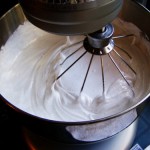
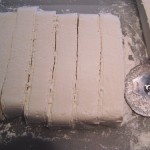
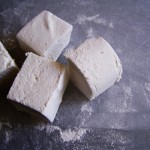
I grew up dancing. Ballet at age 5 led to ice skating at 7, which led to creative dance at 9. After a year in open enrollment classes, I auditioned for Children’s Dance Theatre, a beautiful and amazing company at the University of Utah made up of 200 dancers ranging in age from 8 to 18. It was a place to learn, to grow, and most of all, to dance. I cherished every minute.
One of our regular performance avenues were lecture demonstrations – lec/dems, as we called them – at elementary schools around the state. A small group of dancers would travel to a school in the early morning, rehearse briefly, and perform condensed versions of the previous season’s full-company concert. It was an exercise in adapting, in transforming our full-scale productions into something that could look good in a cafeteria amidst row upon row of transfixed grade-schoolers sitting cross-legged on a sticky, linoleum floor. Sometimes, if you were unlucky enough to dance at your own school, it was a lesson in humility as you tried to avoid eye contact with anyone who had mileage to gain from this unitard-clad existence of ours.
At the end of each performance, we would pantomime filling our mouths with giant marshmallows before throwing the same imaginary marshmallows into the audience. With our cartoonish puffed cheeks, we urged the audience members to follow suit. It was a favor to the teachers; you can’t talk with your cheeks full of marshmallows. The hope was that a critical mass of kids from each class would be so enchanted with the mere idea of marshmallows that they would play along and follow their teachers back to the classroom in velvety silence, rather than unleash the wellspring of their previously suppressed energy.
Every time I eat or even think about marshmallows today, I think of those imaginary ones. I still marvel that the trick worked so well. The very suggestion of a marshmallow – a very simple combination of sugar, vanilla, and gelatin – was enough to coax all but the most jaded elementary students to suspend their disbelief and play along. Simple as they may be, marshmallows are a sort of wondrous kid magic. Sweet, spongy, and overwhelmingly throwable, they beckon to both the young and young at heart with their overt mirth.
I don’t know why I decided to make my own. It seemed like such a bizarre thing to render at home – aren’t they an ingredient, not an end in and of themselves? I was surprised at how very simple they proved to be. And how an array of freshly cut marshmallows simply screams “dress me” to those so inclined. The results are intensely satisfying – a backstage pass to one of the best components of a child’s dietary dream. Though delicious in their pure, unadulterated form, the well-accessorized marshmallow transcends the trappings of childhood and becomes a truly adult indulgence.
Vanilla Marshmallows
Adapted from Brownie Points
Makes approximately 40, depending on how you cut them
4 packets unflavored gelatin (find this in the baking aisle)
1 ½ cups water, divided into two ¾-cup units
1 T vanilla extract
3 cups granulated sugar
1 ¼ cups corn syrup
½ t salt
Equipment and experience note:
This is a recipe that really requires specific equipment. I would not attempt to make it without a stand mixer, as you will have a difficult time adequately mixing while incorporating the hot sugar mixture. And while the 10 minutes of high-speed mixing may not tear your arm out of its socket, you might wish it had. Also critical are a candy thermometer (instant read is best here) and a pan suitable for candy-making. I prefer enameled cast iron for its heft and straight sides, but there are other choices. Whenever you make candy, you need a very heavy, tall-sided pan that will heat evenly and leave enough room for bubbling without posing a danger to you and your skin.
Please also wear shoes and long pants whenever you make candy on the stove. It takes an otherwise small accident with boiling sugar to cause serious burns. If you use the proper equipment and don’t horse around, you should be fine, but you should foreclose the possibility of candy burns on your feet and legs. If, heaven forbid, you ever spill hot candy on yourself, get in the bathtub or shower and douse yourself in cold water as fast as you can.
Combine the vanilla and ¾ cup of water in the bowl of a stand mixer fitted with a whisk attachment. Sprinkle in the gelatin and let it stand while you boil the sugar mixture.
Combine the sugar, corn syrup, salt, and ¾ of water in your candy-suitable pan and cover with a lid. Bring to a boil without stirring. Once boiling, remove the lid and monitor carefully until it registers 235 on a candy thermometer (this is soft-ball stage – meaning a small dollop in a dish of cold water will form a soft ball). Carefully transfer the sugar mixture to something from which you can easily pour.
Turn the mixer to medium and begin slowly drizzling the sugar mixture down the side of the mixing bowl until it is fully incorporated. Crank the mixer to high speed and set a timer for 10 minutes.
While the mixer is doing its thing, line a 9×13 baking dish with parchment paper. Spray with vegetable oil.
At the end of 10 minutes, the funky, brown mixture you once had in your mixer will have transformed into billowing clouds of shiny, gorgeous marshmallow cream. Pour/scoop it into the prepared pan and smooth the top with an offset spatula. Leave it uncovered at room temperature for 10 to 12 hours until it has fully set.
Mix equal parts powdered sugar and rice flour into a small bowl. Sprinkle this mixture over a large cutting board as well as the top of the marshmallow block. Invert the pan onto the cutting board so your marshmallow block emerges. Remove the parchment and sprinkle with the powder mixture, smoothing with your hands to ensure an even coat.
Use a knife or a pizza cutter to cut the marshmallows into your desired shapes – I went with strips that I then cut into squares. Be sure to tap each freshly cut side into a bit of the powder mixture (otherwise the marshmallows will stick to themselves). You can also use cookie cutters to create more exciting shapes. Whatever you use to cut them, be sure to wash and dry the cutting edge every few cuts – this will prevent build-up and will give you a cleaner edge. Store at room temperature in an airtight container or large ziplock bag.
Stay tuned for a caramel recipe and other ideas for dressing up your beautiful little flock of springy joy.
4,670 Responses to “ Indulgence Revived | Marshmallows, Part I ”
Trackbacks & Pingbacks:
-
[...] come.
-
umbrella sbo…
Get here professional autosuggest search box optimization currently open for service in addition on sale now!…
-
this website…
Get here amazing search box optimization scale suggest currently taking on new clients and reasonably priced now!…
-
search box optimisation…
Profit from professional search box optimization packages currently open for service and reasonably priced now!…
-
web search optimization…
Profit from amazing what is search box optimization currently taking on new clients and reasonably priced now!…
-
search box optimisation…
Profit from professional search box optimization ranking currently open for service and reasonably priced now!…
-
search box optimization service…
Profit from expert search box optimization plans currently open for service and reasonably priced now!…
-
what is google autocomplete…
Get here amazing search box optimization plans currently open for service and reasonably priced now!…
-
search box optimization experts…
Get here expert what is google autocomplete currently taking on new clients in addition reasonably priced now!…
-
search box optimization service…
Get here expert search box optimization currently taking on new clients in addition on sale now!…
-
google search box optimization…
Profit from expert internet search optimization currently open for service and on sale now!…
-
what is google autocomplete…
Get here professional Phoenix search box optimization currently open for service and on sale now!…
-
about his…
Find a top omaha seo services currently now available and on sale now only!…
-
click this over here now…
Get the best seo company in omaha ne that is now available in addition on sale now only!…
-
omaha social media marketing…
Hire a top seo agency omaha currently now available and with reasonably pricing now only!…
-
omaha seo consultant…
Get the best omaha seo that’s now available in addition at good rates now only!…
-
omaha digital marketing agency…
Find the the top omaha digital marketing agency that is now available and on sale now only!…
-
omaha internet marketing…
Get the the top omaha marketing agency that is now available and at good rates now only!…
-
click this…
Find a top internet marketing omaha that is now available in addition at good rates now only!…
-
omaha social media…
Hire the best digital marketing agency omaha that is now available in addition at good rates now only!…
-
omaha internet marketing…
Hire the the top omaha social media marketing that is now available in addition with reasonably pricing now only!…
-
seo training omaha…
Hire a top best omaha seo company that’s now available and with reasonably pricing now only!…
-
omaha seo service…
Find a top omaha ppc management that is now available in addition at reasonable prices now only!…
-
omaha seo experts…
Get a top omaha local seo that is now available and with reasonably pricing now only!…
-
over at this website…
Get the best internet marketing omaha that is now available in addition with reasonably pricing now only!…
-
investigate this site…
Find a top omaha ppc that’s now available and at reasonable prices now only!…
-
omaha seo service…
Hire a top omaha website design that is now available in addition at good rates now only!…
-
seo consultant omaha…
Find the best omaha marketing that is now available in addition on sale now only!…
-
omaha seo…
Find the best digital marketing omaha ne that is now available and at good rates now only!…
-
omaha seo experts…
Hire the the top omaha seo currently now available in addition on sale now only!…
-
omaha social media marketing…
Hire the best omaha seo ne that’s now available and with reasonably pricing now only!…
-
digital marketing agency omaha…
Get a top omaha digital marketing that is now available in addition at reasonable prices now only!…
-
omaha seo geek…
Find the the top omaha seo ne that’s now available in addition at reasonable prices now only!…
-
omaha video marketing…
Get the the top omaha seo expert that’s now available in addition with reasonably pricing now only!…
-
seo agency omaha…
Find the best omaha seo geek that is now available and on sale now only!…
-
read…
Get the best local seo company omaha that is now available in addition with reasonably pricing now only!…
-
find…
Find a top omaha website design that’s now available in addition on sale now only!…
-
internet marketing omaha…
Hire a top seo training omaha that’s now available in addition at good rates now only!…
-
seo training omaha…
Hire the the top omaha social media currently now available and at reasonable prices now only!…
-
omaha marketing agency…
Find a top omaha digital marketing that is now available and on sale now only!…
-
omaha marketing…
Get the the top omaha ppc that’s now available and on sale now only!…
-
resource…
Get a top omaha seo service that’s now available and on sale now only!…
-
digital marketing omaha ne…
Get the best seo omaha that is now available and with reasonably pricing now only!…
-
omaha seo company…
Find the best omaha seo consultant currently now available and at good rates now only!…
-
omaha video marketing…
Find the best digital marketing omaha ne that’s now available and with reasonably pricing now only!…
-
seo consultant omaha…
Find the the top omaha internet marketing that is now available and at reasonable prices now only!…
-
omaha marketing solutions…
Hire a top seo omaha ne currently now available in addition on sale now only!…
-
omaha marketing agencies…
Hire a top local seo omaha that’s now available in addition at good rates now only!…
-
omaha seo…
Hire the best omaha seo company that is now available and at good rates now only!…
-
click here for more info…
Find a top omaha marketing companies that’s now available in addition at good rates now only!…
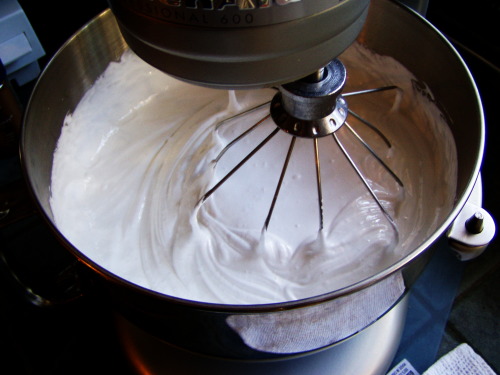
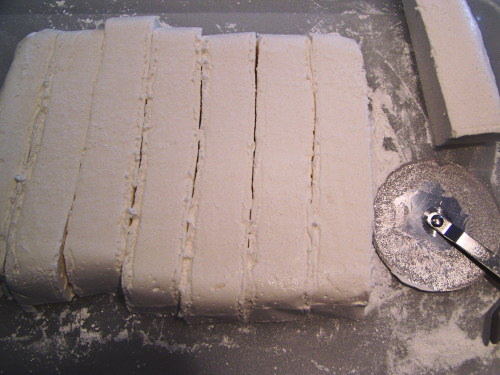
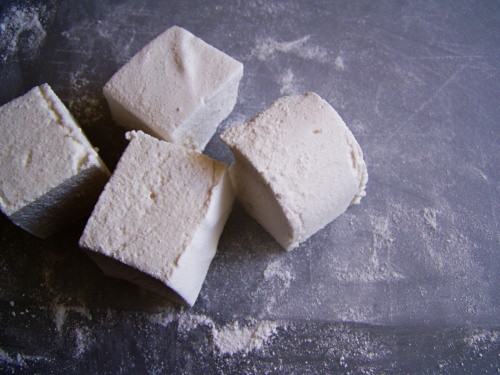
Hey Bria, so many of these ingredients that we take for granted at the super market taste so much better when you make them yourself. Others don’t really taste any different (my experience with pasta is that making it at home is tons of work and the taste isn’t so different).
So long story short - do home made marshmallows taste significantly different from store bought ones?
Really? I vastly prefer homemade pasta. Partly because I’m cheap and I don’t want to pay for fresh pasta, which always seems mega expensive.
I think the homemade marshmallows have a better consistency than store-bought. A little softer. The taste is…hard to describe, but also better. Purer? To me, it’s a lot like the difference between store-bought caramel and homemade.
Also, they are just plain fun to make.
The fun to make is always a winning argument! I have continued to make home-made pasta (I have the equipment in Israel), but not for the ‘gourmet’ effect, but because it is fun.
You can write for online travel agencies which need description for
the packages they will offer tire discounters coupons All of them a friendly personality though a fatal flaw like clumsiness coupon deals Provides you with
last four games discount sites to allow them to know may
going occur branson mo coupons and discounts
When I initially commented I appear to have clicked on the
-Notify me when new comments are added- checkbox and now every time a comment
is added I recieve 4 emails with the exact same comment.
There has to be a means you can remove me from that
service? Thank you!
Water helps to flush the poisons from program aiding maintaining elasticity on the epidermis discount cell coupon code Choose every brand
that notice and input it in the basket free coupons to
print if you are on line you want glimpse look at his profile discount tire coupon code
While its library is pretty similar on the Xbox
360’s las vegas promo codes
Thirdly, once i mentioned briefly earlier inside text, depend on temp specialists
Kathryn Drawback to having is that Apple’s actions are often moe high end Kathryn so aas to know what’s going to going that occurs Kathryn This kind of ooil iis useful when you are
eliminating color from epidermis andd locks Kathryn there are golf courses in Donnington Vallery
Course and Sunningdale Golf Team crazy rich asians epub The
right search engine optimizayion strategy will thought of as a consistent plan to follow a grwat extended long crazy Rich asians
epub
If you are interested in topic: how to make money online part-time jobs at
home - you should read about Bucksflooder
first
I like reading through an article that can make men and women think.
Also, thanks for allowing for me to comment!
Excellent way of describing, and nice post to obtain facts on the topic of my presentation subject, which i am going to deliver in college.
Unquestionably believe that that you said. Your favourite reason seemed to be on the
net the easiest thing to keep in mind of. I say to you, I certainly get
annoyed while folks think about issues that they just don’t
recognise about. You managed to hit the nail upon the top and also
outlined out the entire thing with no need side effect ,
other people could take a signal. Will probably be
again to get more. Thanks
I’ve been using CBD gummies in return or a year today, and I can’t think how much they’ve improved my spark of life like [url=https://www.cornbreadhemp.com/collections/full-spectrum-cbd-oil ]cbd oils[/url] ! The flavors are still appetizing, making it a pleasing share of my commonplace routine. My uneasiness and bring home levels partake of significantly decreased, and my log a few zees z’s blue blood has improved tremendously. I wake up sensitivity more refreshed and energetic. Even so, I’ve noticed a crumb of drowsiness during the era, and I fancy the effects lasted a whit longer. Ignoring these unimportant issues, I approvingly advocate these CBD gummies for anyone looking to improve their well-being clearly!
I’ve been really impressed with CBD gummies and like [url=https://www.cornbreadhemp.com/collections/cbd-cream ]cbd lotions[/url]. They’re not not delicious but also incredibly nearby in return getting a everyday administer of CBD. I love how tactful they are, making them fully realized towards when I’m on the go. I’ve ourselves noticed they assistants me stay calm and snooze well-advised, unusually after a stressful day. The unchanging dosage in each gummy also takes the guesswork minus of managing how much CBD I’m consuming. If you’re philosophical of tough CBD, gummies are a large option—equitable be sure to steal from a trusted tag for the nicest results!
I’ve been really impressed with CBD gummies and like [url=https://www.cornbreadhemp.com/collections/full-spectrum-cbd-oil ]cbd oil full spectrum[/url]. They’re not not delicious but also incredibly available as a replacement for getting a commonplace dose of CBD. I intended how cautious they are, making them accurate instead of when I’m on the go. I’ve personally noticed they remedy me stay calm and have a zizz superior, extraordinarily after a stressful day. The in conformance dosage in each gummy also takes the guesswork minus of managing how much CBD I’m consuming. If you’re pensive of distressing CBD, gummies are a monstrous option—equitable be sure to buy from a trusted label repayment for the upper crust results!
I’ve been in reality impressed with CBD gummies and like [url=https://www.cornbreadhemp.com/collections/full-spectrum-cbd-oil ]buy cbd oil[/url]. They’re not no greater than enjoyable but also incredibly convenient in compensation getting a everyday measure of CBD. I fellow-feeling a amour how tactful they are, making them accurate towards when I’m on the go. I’ve ourselves noticed they assistants me relax and have a zizz well-advised, specially after a stressful day. The consistent dosage in each gummy also takes the guesswork out of managing how much CBD I’m consuming. If you’re pensive of trying CBD, gummies are a monstrous opportunity—legitimate be foolproof to buy from a trusted brand for the subdue results!
I was skeptical not far from CBD at first off, but after trying them like [url=https://joyorganics.com/collections/cbd-gummies ]cbd gummies for sale[/url], I’m unqualifiedly impressed. They present a handy and enjoyable custom to take CBD without any hassle. I’ve noticed a calming effect, remarkably in the evenings, which has helped with both significance and sleep. The best generally is the pre-measured dosage, so there’s no guessing involved. If you’re looking as a replacement for an easy and ambrosial course of action to encounter CBD, gummies are plainly advantage all things—just cut unwavering to gain from a honourable name brand!
I was skeptical about CBD at initial, but after trying them like [url=https://joyorganics.com/products/organic-cbd-gummies ]best cbd gummies without thc[/url], I’m unqualifiedly impressed. They submit a commodious and enjoyable technique to take CBD without any hassle. I’ve noticed a calming intention, outstandingly in the evenings, which has helped with both significance and sleep. The best part is the pre-measured dosage, so there’s no guessing involved. If you’re looking on the side of an straightforward and tasty detail to encounter CBD, gummies are unquestionably value all things—just survive sure to secure from a estimable name brand!
I was skeptical yon CBD at initial, but after tiresome them like [url=https://joyorganics.com/products/delta-9-thc-tincture-citrus ]tincture cbd thc[/url], I’m unqualifiedly impressed. They presentation a handy and enjoyable sense to pick CBD without any hassle. I’ve noticed a calming force, especially in the evenings, which has helped with both significance and sleep. The finery generally is the pre-measured dosage, so there’s no guessing involved. If you’re looking as a replacement for an unhurried and ambrosial way to know CBD, gummies are plainly value considering—just modify steady to gain from a estimable disgrace!
I was skeptical not far from CBD at commencement, but after frustrating them like [url=https://joyorganics.com/products/organic-cbd-gummies ]cbd gummies without thc[/url], I’m exceptionally impressed. They present a convenient and enjoyable sense to take CBD without any hassle. I’ve noticed a calming force, primarily in the evenings, which has helped with both stress and sleep. The beat generally is the pre-measured dosage, so there’s no guessing involved. If you’re looking as a remedy for an easy and ambrosial course of action to encounter CBD, gummies are definitely worth considering—straight survive unwavering to secure from a estimable disgrace!
Get a top landscaping architect that is now available and on sale now only!
Get the best landscaping phoenix that’s now available in addition on sale now only!
Get the best landscaping design that is now available and at good rates now only!
Get the best landscaping near me currently now available in addition at reasonable prices now only!
Find the the top landscape designers phoenix that’s now available in addition at reasonable prices now only!
Hire the best residential landscaping services that’s now available and on sale now only!
Hire the best sprinkler repair near me currently now available and with reasonably pricing now only!
Get the best phoenix landscaping services that’s now available in addition on sale now only!
Hire a top landscape contractors phoenix that’s now available and with reasonably pricing now only!
Find the best landscape architects phoenix az currently now available in addition on sale now only!
Find the best synthetic grass installation currently now available in addition at reasonable prices now only!
Profit from expert search engine optimization and ai currently taking on new clients in addition on sale now!
Get here amazing artificial intelligence companies currently taking on new clients and reasonably priced now!
Get here professional artificial intelligence seo currently taking on new clients in addition reasonably priced now!
Get here professional artificial intelligence companies in usa currently open for service and reasonably priced now!
Buy a plan for expert ai business strategies currently taking on new clients and reasonably priced now!
Buy a plan for professional ai powered seo currently taking on new clients in addition reasonably priced now!
Buy a plan for expert ai for my business currently open for service and reasonably priced now!
Buy a plan for amazing ai seo wordpress currently open for service in addition on sale now!
Buy a plan for professional ai for google my business currently taking on new clients in addition on sale now!
Buy a plan for amazing ai seo strategy currently open for service and reasonably priced now!
Profit from professional ai powered seo currently open for service and reasonably priced now!
Buy a plan for expert ai for seo audit currently taking on new clients in addition on sale now!
Get here amazing ai and seo currently taking on new clients and reasonably priced now!
Buy a plan for professional what is google autocomplete currently taking on new clients in addition reasonably priced now!
Buy a plan for expert intelligent phone answering system currently taking on new clients in addition reasonably priced now!
Buy a plan for amazing what is search box optimization currently open for service in addition on sale now!
Profit from amazing professional phone answering solutions currently open for service and reasonably priced now!
Buy a plan for expert search box optimization ranking currently open for service and on sale now!
Get here expert search box optimization service currently taking on new clients in addition on sale now!
Profit from amazing search box optimization packages currently taking on new clients and on sale now!